Dec 20 2015
6x1500m and year plan
We slept in late and I spent the morning fiddling with my annual training plan, and in the afternoon we had the Christmas party on the rowing club. So I had little time to train. Wanted to do an endurance session and decided to try one of the sessions from the Olbrecht book. It’s a swimming endurance session described as 6x500m at 20 seconds rest. The description also seems to indicate to swim it as 50m fast / 50m slow but I am not 100% sure about that. Anyway, I decided that a good erg equivalent would be a 6x1500m at 20 seconds rest, and to do every fourth 500m at slightly faster (“6k”) pace.
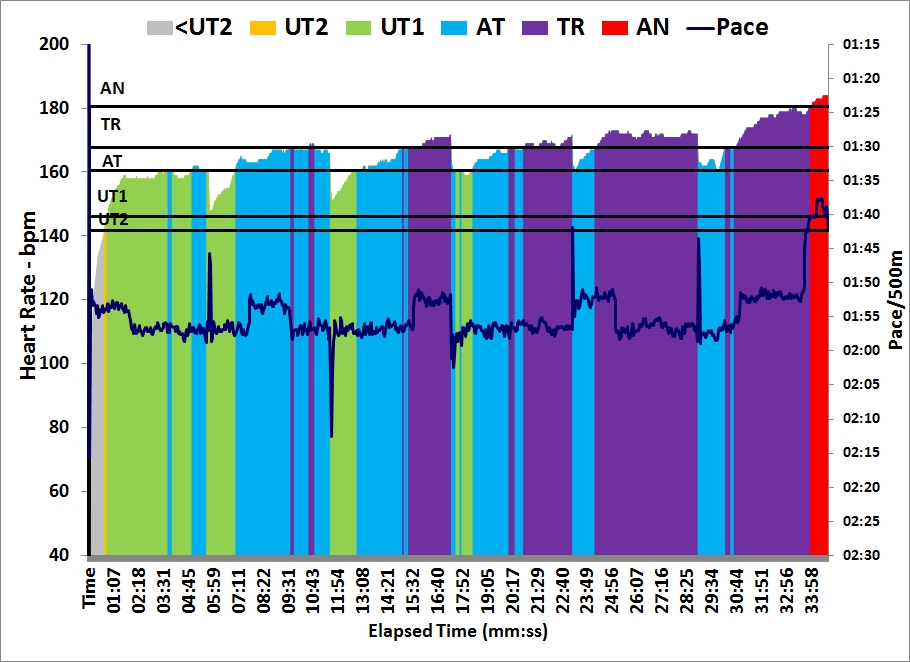
Workout Summary - Dec 20, 2015
--|Total|-Total-|--Avg--|-Avg-|Avg-|-Avg-|-Max-|-Avg
--|Dist-|-Time--|-Pace--|Watts|SPM-|-HR--|-HR--|-DPS
--|09000|34:31.6|01:55.1|229.6|24.9|165.4|184.0|10.5
Workout Details
#-|SDist|-Split-|-SPace-|Watts|SPM-|AvgHR|MaxHR|DPS-|Comments
01|01500|05:47.6|01:55.9|225.0|24.0|153.9|162.0|10.8| fast/slow/slow
02|01500|05:46.6|01:55.5|227.0|24.4|163.2|169.0|10.6| s/f/s
03|01500|05:46.6|01:55.5|227.0|24.4|164.1|172.0|10.6| s/s/f
04|01500|05:50.5|01:56.8|219.5|24.1|166.1|171.0|10.6| s/s/s
05|01500|05:45.6|01:55.2|229.0|25.4|170.3|173.0|10.3| f/s/s
06|01500|05:34.7|01:51.6|252.0|27.2|173.9|184.0|09.9| s/f/f
I should have done this at a slightly faster pace. It felt like a black hole training. Pleasantly exhausting but not too hard. Still it’s a good session to add to the mix. Should be more like a threshold session but I should do it slightly faster. If I do it another time, I should do the slow bits at today’s average and the fast bits at 6k pace. Perhaps I should also do alternating 150m fast and slow.
Year plan
In the past years I have rowed according to an intuitive year plan which I didn’t write down. I would build up endurance during the fall (like this year), use the Christmas vacation for some SB/PB attempts, then work towards the shorter erg tests (5km, 2km, 1km, 500m) during the spring, then prepare for the head race, and subsequently dive into sprint season.
This year will be no different in terms of macro cycles, but I want to try to plan the meso cycles a bit more explicitly. The Olbrecht book has some templates, with the instruction to copy and enlarge them for use. Of course I will use excel instead.
So this morning I looked at the race calendar and tried to build up a logical year plan.
I will skip Masters Worlds in Copenhagen. Instead, my important sprint races will be the Czech Open Masters and Euromasters in Munich. The other important race will be the 6km in Horin in the Men’s LW category. This gives me a distance (“head race”) peak in April and a sprint race peak in July. If I manage to get into Henley Masters, I will row it as well.
The Slovak Championship and the regional races will be training races, with little taper.
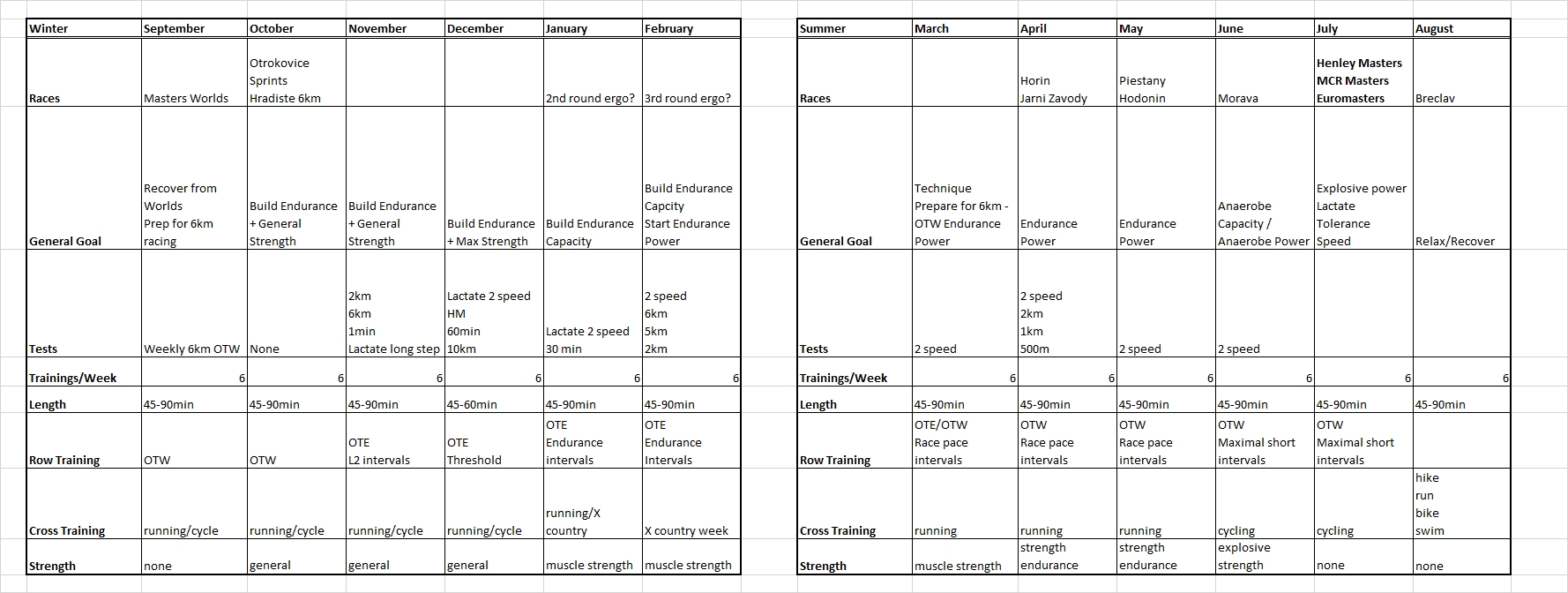
This was easy to create. The hard part will be to plan the first few meso cycles. Looking forward to the challenge.
Romana and the girls want to row erg races on the 9th of January and the 30th of January, so I tentatively put them into the schedule. I have to make a confession. When I ignore my Junior/Young Senior career, I have never rowed an erg race. As a junior I dreaded the compulsory erg testing that we had to do with rowing association officials noting your time.
Looking at the results from the first round of the Czech Indoor Rowing cup, I guess I will be about 30 seconds behind the winner. But if I accompany Romana and the girls to the venue, I might just as well row the race, right?
The draft year plan in a bigger font:
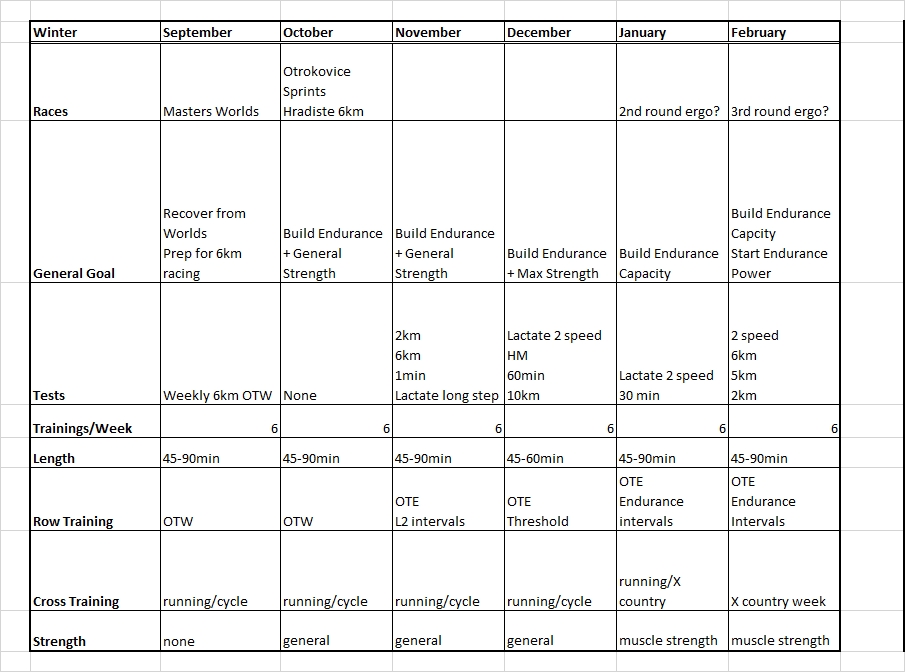
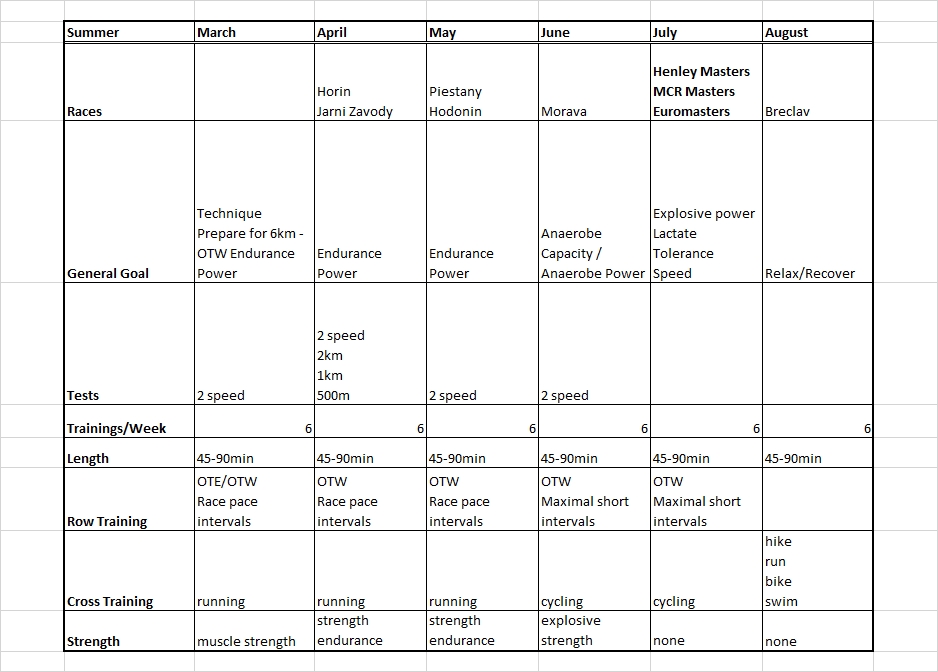
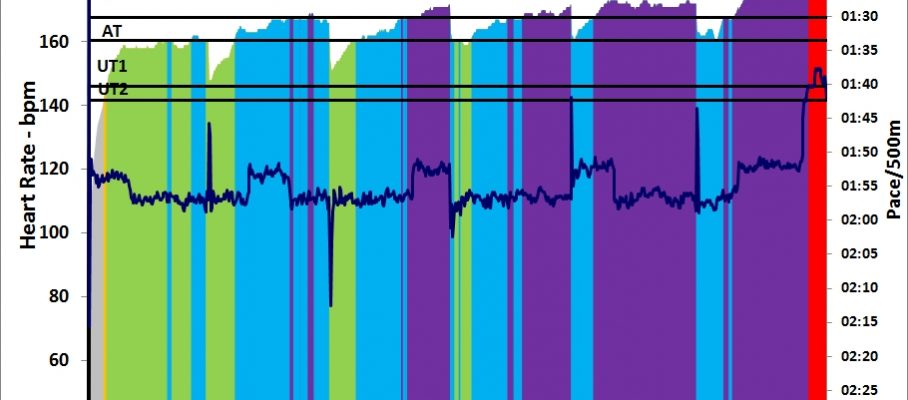
Jan 1 2019
The Full 42195 meters
On Sunday afternoon, Dusan Machacek, the president of the Czech Rowing Association, put an event on Facebook.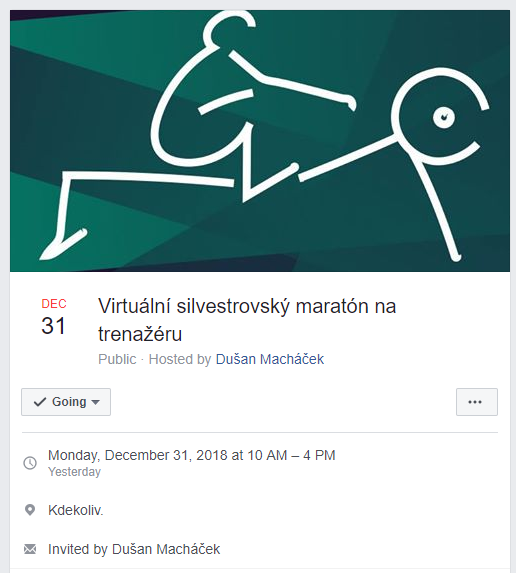
The invitation said:
I was on my way to the Janacek Theater to attend the traditional Nutcracker ballet performance when I saw the invite, and I immediately responded.
So on Monday at 10AM I was facing this:
I took a deep breath and started rowing. I was sort of well prepared. I had 1 liter of water, 0.5 liter of “sport drink” (I mixed my own from lemonade syrup with salt added), a towel, some dry clothes, the radio tuned to Radio Krokodyl (‘hit after hit’), the iPhone running Painsled and the iPad running Zwift (using Painsled as the power source) with the Pretzel route (72km with more than 1300m of climbing, which takes about the same time to complete as the rower marathon). I had also prepared by looking up my predicted marathon pace (2:05 pace or 180W) on rowsandall.com.
A few minutes before the race, I had responded to a tweet by Stephen Seiler who shared that he had rode a bike at 202 Watt for 202 minutes. I answered that the geeky rower response would be to row 42195m at 180W in 180 minutes. I didn’t have time to do the math, but I knew 180W is a little faster than 3 hours.
In the first few minutes of the marathon I had fun “solving” this equation using the Performance Monitor. I estimated that 177 Watt would give me a finish time of 177 minutes, so that became the target. (Actually, I solved the equation later and 176.6533 W corresponds to 176.6533 minutes for 42195 m.) The joy of being a data geek.
In the first 30 minutes there were a few interuptions to do with the cats. They are afraid of the erg noise but they have to pass it to go outside. I stopped briefly to let Rudi (one of our cats) pass. I also stopped to sip some drinks after each 30 minutes, and that made the whole endeavor pretty easy in the end. I focused on rowing to the next 10k interval, or to the drink break. Also the “company” at Zwift kept it interesting. Now and then I would end up riding with someone else for a few kilometers.
You can see the breaks in the chart. There was an unplanned one just before the two hour mark when the radio stopped playing and I had to plug it in. From about the 1:30 mark I tried to get the average power up to 177W, but after each break it was back at a value around 170.
This chart shows how my “dominant” stroke rate jumped from 22spm to 23spm after around 14km of rowing (second drink break).
This chart shows how I started to feel fatigue at the 30km mark (12km to go). My legs were still OK and I also didn’t have problems with my back. I had a different problem. Blisters.
In the last 6km, time seemed to suddenly go very slowly. I wanted to be ready, really. I let the power drop a bit too often, and in the final 500m I did a little sprint to at least bring my finish time under 178 minutes.
It was not as hard as I thought. Actually, the first 21km went by surprisingly fast.
By sanderroosendaal • Uncategorized • 0 • Tags: concept2, endurance, erg, ergometer, full marathon, marathon, rowing, training